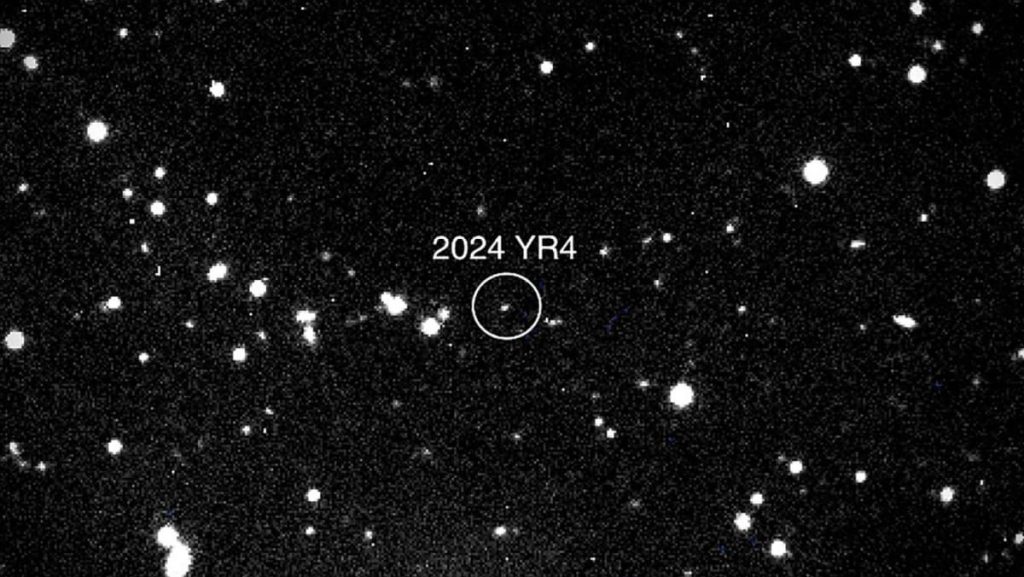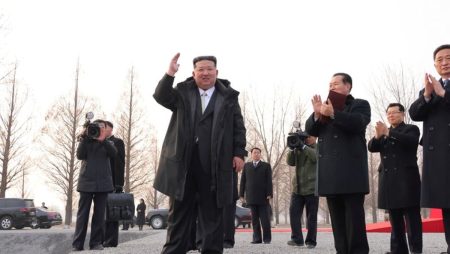The Awakening of a New Threat
Last Friday, a chilling update from the European Space Agency (ESA) thrust China into a critical phase of its planetary defence strategy. The ESA revised the probability of the asteroid 2024 YR4 impacting Earth to 2.2 per cent in 2032, catapulting it to the top of their risk list. This large asteroid, estimated to be between 40 and 90 meters in diameter, was initially discovered by the University of Hawaii’s Institute of Astronomy in late December. The discovery’s significance was underscored by its odds of a collision with Earth, which surpassed an internationally recognized threshold, thus activating global asteroid response mechanisms. The implications are profound, and the international community is now on high alert, with China taking a proactive stance by assembling a specialized planetary defence team.
China’s Planetary Defence Initiative
In the wake of the 2024 YR4 discovery, China’s State Administration of Science, Technology and Industry for National Defence (SASTIND) moved swiftly. A special projects centre within SASTIND posted a recruitment notice for three new roles dedicated to asteroid monitoring and the development of early warning methods. This notice, shared on the WeChat account of the journal China Space Science and Technology, highlights China’s commitment to safeguarding Earth from potential asteroid impacts. The newly formed team will consist of graduates with expertise in aerospace engineering, Earth observation, and innovative defence strategies. This initiative is a crucial step forward, reflecting China’s growing role in international space research and planetary defence.
Learning from Past Successes
The world has seen successful asteroid defence tests before, and these provide a foundational framework for future efforts. In 2022, NASA’s Double Asteroid Redirection Test (DART) mission made history by successfully altering the trajectory of an asteroid through a targeted collision. This achievement demonstrated that with the right technology and planning, humanity can take proactive measures to protect our planet. Li Mingtao, a researcher at the Chinese Academy of Science’s National Space Science Centre, is optimistic about China’s progress. According to Li, China has made "great progress" in asteroid defence and is now focusing on enhancing equipment configuration and performance, as well as cultivating a dedicated team of experts to contribute to this global effort.
China’s Vision for the Future
Li Mingtao’s work is pivotal in shaping China’s approach to asteroid defence. His innovative plans and strategies aim to propose a comprehensive Chinese framework for near-Earth asteroid early warning and defence. In September, China unveiled its conceptual plan for its first mission to defend against a near-Earth asteroid. This mission, set to launch around 2030, involves observing an asteroid and then using a spacecraft to alter its path. China’s involvement in the International Asteroid Warning Network (IAWN) and the Space Mission Planning Advisory Group (SMPAG) underscores its commitment to international cooperation in space safety. These organizations facilitate the sharing of information and coordinate response strategies among member nations, ensuring that the global community is well-prepared to face any asteroid threat.
The Potential Impact of 2024 YR4
The 2024 YR4 asteroid is substantial enough to cause localized damage if it were to strike Earth. Li Mingtao explains that while the asteroid is likely to either fall into the ocean or disintegrate upon entering Earth’s atmosphere, the possibility of it hitting land cannot be entirely ruled out. If an impact were to occur on land, the shock waves and radiation could destroy a medium-sized city, posing a significant threat to human life and infrastructure. The precedent of the 2013 Chelyabinsk meteor in Russia, which measured 20 meters in diameter and had an explosive force equivalent to 30 atomic bombs, serves as a stark reminder of the potential devastation. The meteor damaged 300 houses and injured 1,500 people, illustrating the urgent need for effective early warning and defence systems.
A Collective Effort
Despite the heightened public concern, Li Mingtao emphasizes that scientists are relatively calm and are focusing on gathering more data. The asteroid, which passed close to Earth in December, will become less visible over the next few months, prompting astronomers to use increasingly powerful telescopes to track its movements. By the end of April, they hope to have a more refined understanding of the asteroid’s trajectory. The next significant observation window will be in 2028, when the United Nations is expected to convene a discussion to decide on the implementation of a defence plan. This collaborative approach, driven by international cooperation and advanced technology, is essential in ensuring the safety of our planet and its inhabitants.












